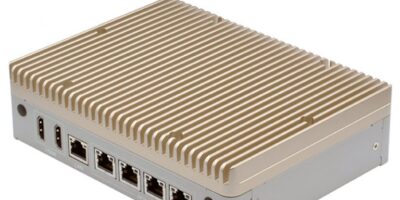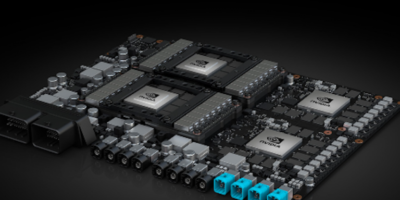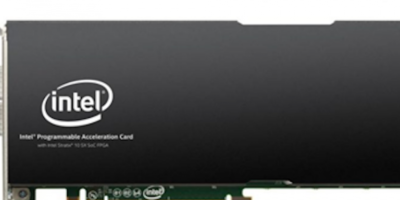Embedded computer specialisr, Aaeon, has introduced the Boxer-8170AI, for artificial intelligence (AI) at the edge networks.
The embedded computer is based on Nvidia’s Jetson TX2 and has four PoE LAN ports and four USB 3.0 ports.
At the heart of the computer is the Nvidia Jetson TX2 6-core processor, created by pairing the dual Denver 2 and quad Arm 57 processors into a single system on chip (SoC). The design has up to 256 CUDA cores which provide speed and performance to power AI at the edge, says Aaeon. The Boxer-8170AI comes with 8Gbyte LPDDR4 memory and 32Gbyte eMMC storage on-board. It supports AI frameworks such as TensorFlow and Caffe, as well as AI inference software from developers and customers.
The Boxer-8170AI’s four PoE LAN ports each have their own dedicated chip. This allows for higher bandwidth and stability for each port, allowing PoE cameras to operate individually on dedicated connections, explains Aaeon. The Boxer-8170AI supports a maximum output of 60W for up to four PoE cameras. It can be used for a range of AI solutions incorporating PoE cameras such as smart retail, virtual fences, and access control.
I/O features include four USB 3.0 ports, allowing for additional cameras or devices to be connected to the system. The Boxer-8170AI also features two COM ports for easy integration into industrial systems, two HDMI ports, and remote on/off. The Boxer-8170AI connects to networks with a Gigabit LAN port and two antenna ports to connect to wireless networks or act as an artificial intelligence of things (AIoT) gateway. The BOXER-8170AI also features an SD Card slot and USB on-the-go (OTG) for easy maintenance.
For operation in harsh environments, the Boxer-8170AI has a fanless design and all- aluminium chassis to protect the system from dust, vibration and other hazards. The Boxer-8170AI operates in temperatures from -20 to +50 degrees C and has an input voltage range of 12 to 24V DC.
The company module is only 48 mm thick, to fit into almost the constrained space needed to power AI edge applications.
Established in 1992, Aaeon designs and manufactures professional IoT solutions. It is committed to innovative engineering and provides reliable computing platforms, including industrial motherboards and systems, industrial displays, rugged tablets, embedded controllers, network appliances and related accessories, as well as integrated solutions.
The company is an Associate Member of the Intel Internet of Things Solutions Alliance.







